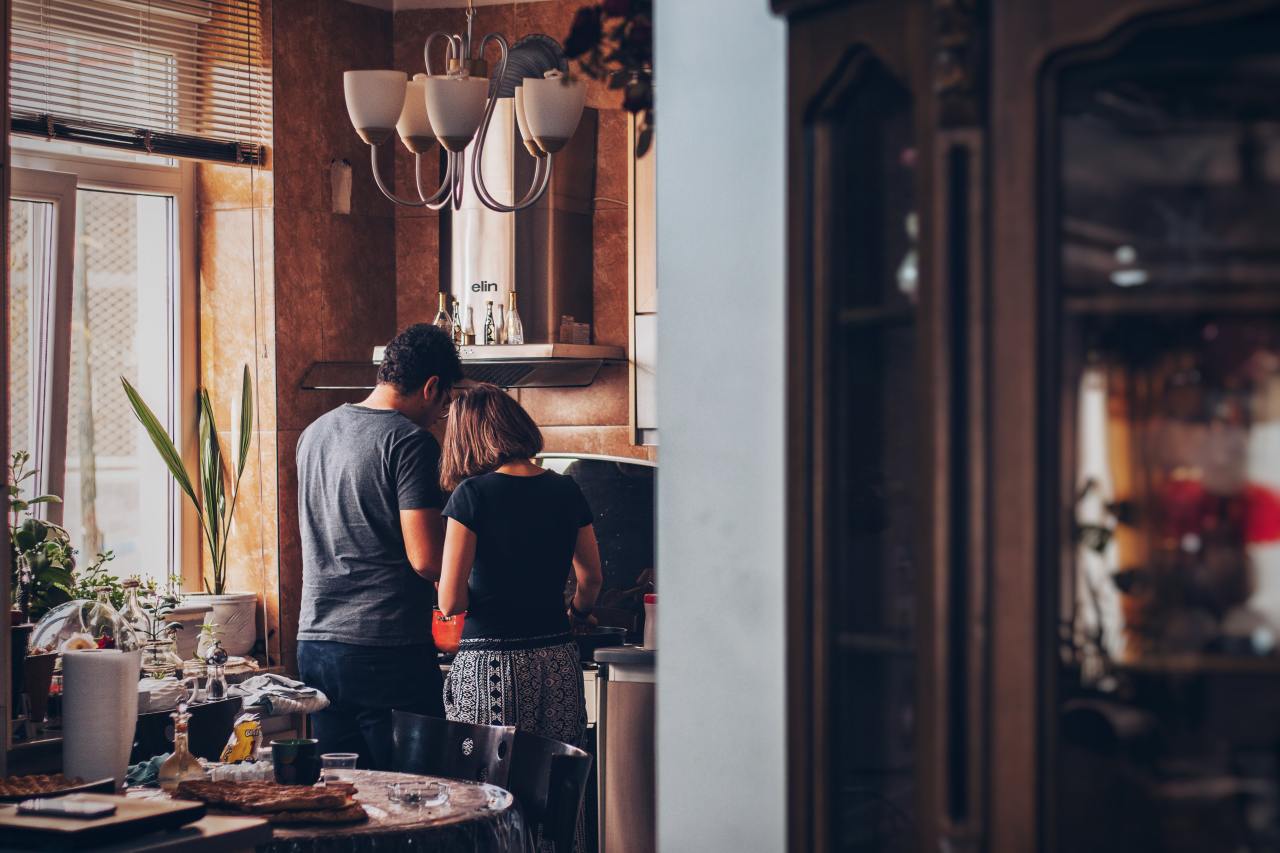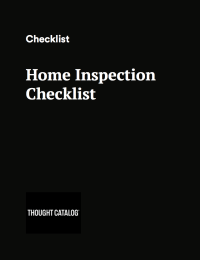Home Inspection Checklist – For Buyers, Sellers [2020]

As a home buyer or even a renter, it’s important to make sure that your property is functional and safe. Use this home inspection checklist to make sure that you are inspecting all parts of the property. There are several home inspection checklists below that are categorized based on different essential housing categories. While a licensed home inspector will be completing an official inspection report, it’s good that you document items on this checklist as well (a little DIY home inspection checklist, if you will). You can check off items that are in good condition and make notes about the items that are not.
As a home buyer or even a renter, it’s important to make sure that your property is functional and safe. Use this home inspection checklist to make sure that you are inspecting all parts of the property. There are several home inspection checklists below that are categorized based on different essential housing categories. While a licensed home inspector will be completing an official inspection report, it’s good that you document items on this checklist as well (a little DIY home inspection checklist, if you will). You can check off items that are in good condition and make notes about the items that are not.

Printable Home Inspection Checklist
Download our free home inspection checklist in PDF format. Instant download. No email required.
Download PDFFoundation
In your home inspection, it is important to evaluate the property’s foundation and whether or not it will pose any problems down the road.
- Proper drainage away from the property
- No evidence of standing or still water
- Railings on stairs and decks are secure
- Downspout drainage directed away from the property
- There is foundation levelness and the sides of the property appear straight (not bowed or sagging)
- Window and doorframes are square and sturdy
- Visible foundation appears straight with no significant cracks
- Exterior structures have no evidence of termite damage or rotted wood
- No leaks from the septic tank
- For the exposed foundation, make sure there are no stains and no major cracks
Exterior
Examine the exterior of the property and make sure everything is in good condition.
- Adequate space between ground and wood
- The stucco has no large cracks
- The siding has no cracking, curling, rot, or decay
- No vines on the surface of the property
- Exterior paint has no flakes
- Exterior vents are clean
- No noticeable stains on the exterior
- For the composition shingles, there is no curling, damaged, or missing shingles on the roof
- For the wood shingles, there is no mold, rot, or decay on the roof
- For flat roofs, there is no obvious patches and no cracks or splits
- No evidence of excess roofing
- There is no decay or rust on the gutters and the joints are sealed (make sure that they are attached securely to the property)
- Chimneys are straight and there is no evidence of damaged bricks or cracked joints
- No broken glass or damaged screens
- Wood frames are secure, there are no cracks, rot, or decay
- Storm or thermal glass is used for the windows
- Drip caps are installed over the windows
- Joints around frames are caulked
- Exterior windows and doors open easily and latch properly
Interior
At this stage it’s essential to walk through the house and be skeptical of all that you see.
- Floors, walls, and ceilings appear straight
- No stains on floors, walls, or ceilings
- No large cracks in the walls or the ceilings
- Interior doors operate easily and latch properly and there is no damage or decay
- Lead paint is not used
- Paint, wall covering, and paneling are in good condition
- Evidence of adequate insulation in walls
- The fireplace has no cracking or damaged masonry
Kitchen
The kitchen is has many working parts and you want to make sure everything is up to date and functional so you can avoid repairs.
- Working exhaust fan that is vented to the exterior of the property
- A ground fault circuit interrupter (“GFCI”) protection for electrical outlets is within 6 feet of the sink. These GFCI receptacles are important.
- The dishwasher drains properly and there are no leaks
- The cabinets are in good condition and the doors and drawers operate properly
- No leaks in pipes under the sink
- No sign of water damage
- The water flow in the sink is adequate
- There is no excessive rust or deterioration in garbage disposals
- The built-in appliances operate properly
Bathrooms
Bathrooms are important. Need I say more? Make sure your bathrooms follow this inspection checklist.
- Sink, tub, and shower all drain properly
- Plumbing and cabinet floor under the sink is in good condition
- Any metal in the bathroom is not rusted
- The toilet flushes and is stable
- There are no stains or evidence of past leaking around the base of the bath or shower
- Caulking is in good condition (inside and outside of the tub and shower area)
- The tub and/or shower tiles are secure
Plumbing/HVAC
Take a close look at the property’s plumbing and HVAC unit. Both are big items that are worthy of close inspection to avoid costly repair.
- The water pump doesn’t short cycle
- Hot water temperature is between 118 – 125 degrees Fahrenheit
- The galvanized pipes do not restrict water flow
- There are no signs of rust in the water heater and it is vented properly. It is important to make sure it is sized to produce adequate quantities of hot water throughout the property.
- Sump pump is working properly
- For the pipes that are visible, there is no damage, no evidence of leaks, and no signs of stains on the pipes
Electrical
Your electrical system is probably the hardest to assess. However, it’s important to pay attention to your electrical system in your home inspection and look out for any safety hazards.
- Lights and switches work properly
- Adequate number of electrical outlets in each room of the property
- Electrical outlets work properly
- For the visible wiring, make sure there is no“knob-and-tube” wiring and the cables are securely protected and the wiring connections are good
- Make sure the service panel is at adequate capacity and the fuses are not overheating
- Check that there is no faulty wiring or problematic electrical switches
- There is no Knob-and-tube (K&T), also known as obsolete wiring. This outdated system can be a safety hazard.
- Check that there are no aluminum wiring for branch circuits
Heating/Cooling System
Again, another integral part of this home inspection checklist. If these aren’t working properly they can cause a lot of stress (not to mention discomfort in the really hot and really cold months).
- As a whole, the system appears to operate well throughout the property (i.e. there is good air flow and proper ventilation)
- No open seams on the flues
- The air filters are clean
- No rust around cooling unit
- The ductwork is in good working condition
- Check to make sure there is no asbestos on the heating pipes, the water pipes, or the air ducts
- Make sure there are separate flues for gas, oil, and propane
Miscellaneous
And… everything else for your home inspection.
- Smoke and carbon monoxide detectors are installed
- The inspectors do a Radon testing
- Stair handrails are in good condition
- Automatic garage door opener operates properly (if applicable)
- Crawl space is adequately vented to the exterior
- No evidence of moisture in the basement
- No evidence of decay or damage in the attic
- Sufficient and properly installed insulation
- No open electrical splices
- Yard, landscaping, trees, and walkways are in good condition
With this home inspection checklist, you will be a professional home inspector in no time! I mean, not really, you need a certified home inspector to complete a home inspection report and thoroughly note any tough items such as structural problems, exposed wiring, termite damage, uneven paint surfaces, inadequate ventilation, chimney inspection, and water intrusion. Above all though, make sure you have homeowners insurance or rental insurance. Enjoy your new house!



